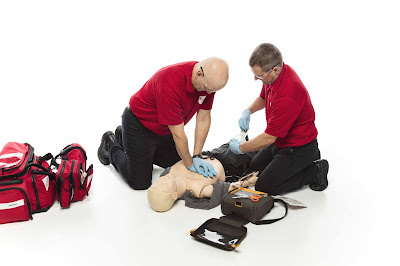First Aid Basics: A Comprehensive Guide to Handling Emergency Situations
Accidents can happen when we least expect them, which is why having a basic understanding of first aid can be a lifesaver in emergency situations. Whether you're at home, work, or out and about, knowing how to respond promptly and effectively can make all the difference.
In this guide, we'll walk you through the essential first aid basics that everyone should know. And if you're in Brisbane, consider taking a first aid course Brisbane to further enhance your skills and confidence.
Assessing the Situation
In any emergency, the first step is to assess the situation and ensure your safety and the safety of others involved. Check for any immediate dangers, such as traffic or fire, before approaching the injured person. Your safety comes first.
Call for Help
If the situation requires immediate medical attention, don't hesitate to call for help. Dial emergency services or ask someone nearby to do so. Quick response can save lives.
CPR: Cardiopulmonary Resuscitation
CPR is a crucial skill that can keep a person's heart pumping in a life-threatening situation. The basic steps involve chest compressions and rescue breaths. If you haven't had the chance to take a first aid course Brisbane, it's highly recommended to learn this skill properly.
Dealing with Bleeding
In case of bleeding, apply pressure to the wound using a clean cloth or bandage. Elevating the injured area can also help control the bleeding. If bleeding is severe, seek medical attention.
Treating Burns
For minor burns, run cold water over the affected area for at least 10 minutes to cool down the skin. Avoid using ice or creams. For more severe burns, cover the area with a clean cloth and seek medical help.
Choking Situations
If someone is choking and can't breathe, perform the Heimlich manoeuvre. Stand behind the person and give quick abdominal thrusts until the object blocking the airway is dislodged.
Dealing with Fractures and Sprains
For fractures, immobilise the injured area by creating a splint using any available material. Elevate the limb if possible. For sprains, use the RICE method: Rest, Ice, Compression, and Elevation.
Recognising Signs of Stroke and Heart Attack
Learn to recognise the signs of a stroke or heart attack, such as sudden numbness, confusion, difficulty speaking, severe headache, chest pain, and shortness of breath. Quick action is crucial in these situations.
Why Take a First Aid Course?
While this guide covers some essential first aid basics, enrolling in a first aid course offers in-depth training and hands-on practice. You'll gain the confidence to handle various emergency situations effectively and learn additional techniques that can make a significant impact in critical moments.
Having a grasp of first aid basics can empower you to respond effectively in emergency situations. Remember, the knowledge you acquire could save a life, possibly even your own.
Consider taking a first aid course Brisbane to enhance your skills and be better prepared for whatever challenges come your way. Empower yourself with the ability to make a difference when it matters most.




Comments
Post a Comment